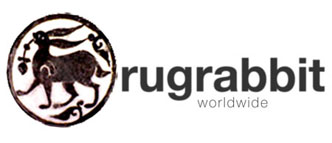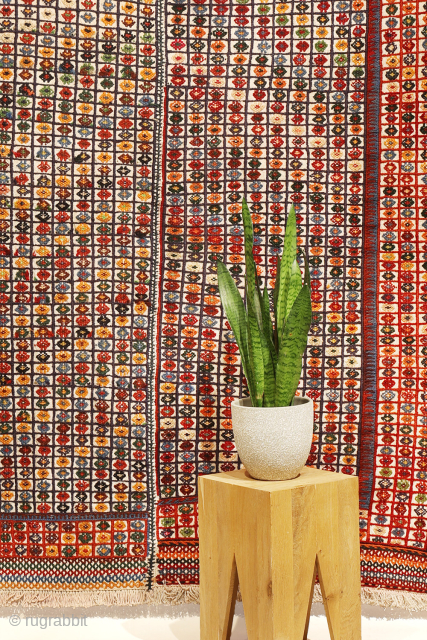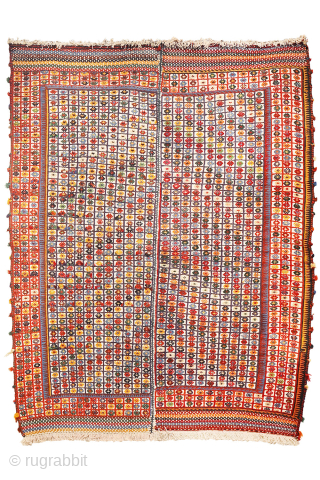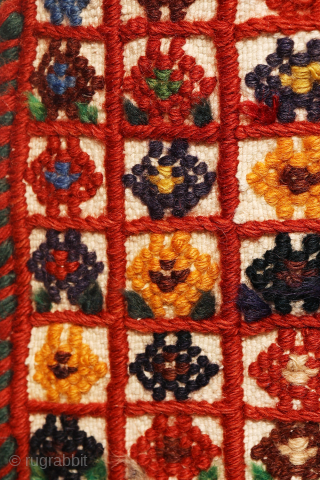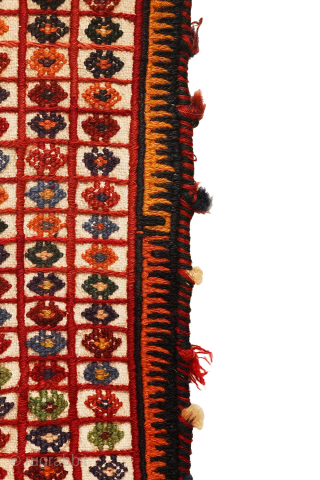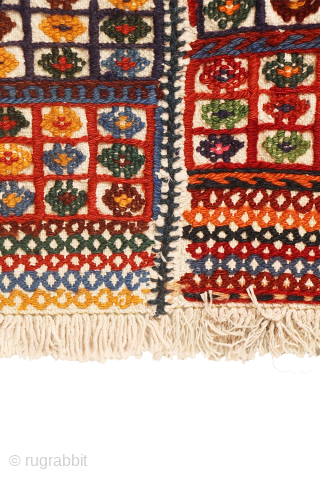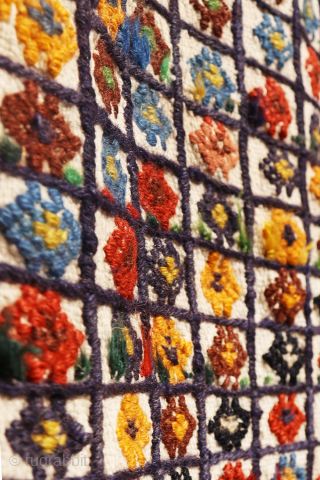Back
Shiraki Kilim from Southern Iran
This type of kilim is known locally in southern Iran as a “shiraki”, a word that literally means “needle work” — though, interestingly, it is woven on a loom rather than sewn. Due to the limited size of the looms available to most weavers, shiraki kilims were traditionally woven in two separate panels and then meticulously joined to achieve the desired width. In this particular piece, the two halves exhibit distinct personalities and are not entirely symmetrical.
Unusually, this shiraki features a white cotton background, and the latticework has been woven with wool. The lattice design showcases a grid of diagonally arranged colorful, pretty flowers. It is also interesting to note that the grid of flowers from the main field is replicated in the border, which is uncommon since traditionally the border and the field were different.
All the dyes used in this kilim are natural. In mint condition
Material: 100% hand-spun sheep wool
Size: 195×155 cms
Origin: Arab tribe of Southern Iran
Date of weaving: 1950s
You can buy this pretty kilim directly from our web: Shiraki Kilim from Southern Iran from the 1950s
This type of kilim is known locally in southern Iran as a “shiraki”, a word that literally means “needle work” — though, interestingly, it is woven on a loom rather than sewn. Due to the limited size of the looms available to most weavers, shiraki kilims were traditionally woven in two separate panels and then meticulously joined to achieve the desired width. In this particular piece, the two halves exhibit distinct personalities and are not entirely symmetrical.
Unusually, this shiraki features a white cotton background, and the latticework has been woven with wool. The lattice design showcases a grid of diagonally arranged colorful, pretty flowers. It is also interesting to note that the grid of flowers from the main field is replicated in the border, which is uncommon since traditionally the border and the field were different.
All the dyes used in this kilim are natural. In mint condition
Material: 100% hand-spun sheep wool
Size: 195×155 cms
Origin: Arab tribe of Southern Iran
Date of weaving: 1950s
You can buy this pretty kilim directly from our web; Shiraki Kilim from Southern Iran from the 1950s
This type of kilim is known locally in southern Iran as a “shiraki”, a word that literally means “needle work” — though, interestingly, it is woven on a loom rather than sewn. Due to the limited size of the looms available to most weavers, shiraki kilims were traditionally woven in two separate panels and then meticulously joined to achieve the desired width. In this particular piece, the two halves exhibit distinct personalities and are not entirely symmetrical.
Unusually, this shiraki features a white cotton background, and the latticework has been woven with wool. The lattice design showcases a grid of diagonally arranged colorful, pretty flowers. It is also interesting to note that the grid of flowers from the main field is replicated in the border, which is uncommon since traditionally the border and the field were different.
All the dyes used in this kilim are natural. In mint condition
Material: 100% hand-spun sheep wool
Size: 195×155 cms
Origin: Arab tribe of Southern Iran
Date of weaving: 1950s
- Home
- Antique Rugs by Region
- Category
- Profiles
- Post Items Free
- Albums
- Benaki Museum of Islamic Art
- Budapest: Ottoman Carpets
- Gulbenkian Museum
- Islamic Carpets. Brooklyn
- Islamic Textiles. Brooklyn
- Konya Museum: Rugs
- MKG, Hamburg
- MMA: Caucasian Carpets
- MMA: Mamluk Carpets
- MMA: Mughal Indian Carpets
- MMA: Ottoman Carpets
- MMA: Safavid Persian Carpets
- MMA: Turkmen Rugs
- McCoy Jones Kilims
- Ottoman textiles. Met
- Philadelphia Museum
- Rugs and Carpets: Berlin
- Seljuqs at the Met
- TIEM, Istanbul: Carpets
- V&A: Classical Carpets
- Vakiflar Carpets: Istanbul
- Baluch Rugs: Indianapolis
- Gallery Exhibitions
- Jaf an Exhibition
- Alberto Levi Gallery
- Andean Textile
- Christie's London: 2016
- Francesca Galloway
- HALI at 40
- ICOC Washington, DC 2018
- Jajims of the Shahsavan
- London Islamic Week April, 2018
- Mongolian Felts
- Navajo Rugs: JB Moore
- Persian Piled Weavings
- SF Tribal & Textile Art Show 2020
- SF Tribal 2019
- Sotheby's: C. Alexander
- Turkish Prayer Rugs
- Turkmen Main Carpets ICOC 2007
